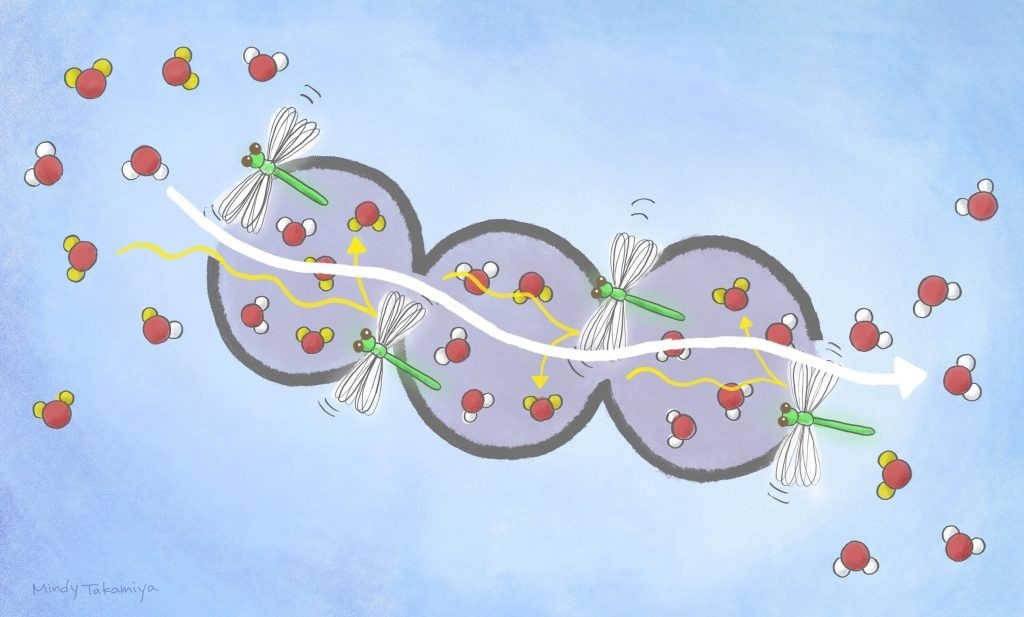Reviewed by Alex SmithNov 11 2022
A research team led by Cheng Gu of the South China University of Technology and Susumu Kitagawa of Kyoto University’s Institute for Cell-Material Sciences (iCeMS) has developed a material that can successfully separate heavy water from regular water at room temperature.
 Incorporating dragonfly-shaped gate molecules into PCP/MOFs makes it 100 times more efficient than before to separate water from heavy water, which has been difficult to separate due to their similar properties. Image Credit: ©️Mindy Takamiya/Kyoto University iCeMS)
Incorporating dragonfly-shaped gate molecules into PCP/MOFs makes it 100 times more efficient than before to separate water from heavy water, which has been difficult to separate due to their similar properties. Image Credit: ©️Mindy Takamiya/Kyoto University iCeMS)
This process has been extremely challenging and time-consuming up until now. The findings have implications for industrial processes that use various forms of the same molecule, including biological ones. The journal Nature published the researchers’ findings.
Isotopologues are molecules with the same chemical formula and similar bonding patterns, but at least one of their atoms differs from the parent molecule in terms of neutron count. For instance, two hydrogen atoms and one oxygen atom combine to form the water molecule (H2O).
Each hydrogen atom has a single proton in its nucleus and no neutrons. Deuterium (D) atoms, on the other hand, are hydrogen isotopes with nuclei that contain one proton and one neutron in heavy water (D2O). Nuclear reactors, medical imaging, and biological research all make use of heavy water.
Water isotopologues are among the most difficult to separate because their properties are so similar. Our work provided an unprecedented mechanism for separating water isotopologues using an adsorption-separation method.
Cheng Gu, Materials Scientist, South China University of Technology
Gu and chemist Susumu Kitagawa, along with colleagues, used a porous coordination polymer (PCP) made of copper as the foundation for their separation technique. Metal nodes joined by organic linkers form the porous crystalline materials known as PCPs. Two PCPs made with various types of linkers were tested by the team.
Their PCPs are particularly crucial for isotopologue separation since the linkers flip when heated to a moderate temperature. As a gate, this flipping action allows molecules to move freely between the PCP’s “cages.” The material becomes immobile as it cools.
When the researchers exposed their “flip-flop dynamic crystals” to a vapor that contained a mixture of regular, heavy, and semi-heavy water and then slightly warmed it, they found that normal water was absorbed much more quickly than the other two isotopologues. This procedure was crucially carried out at temperatures close to room temperature.
The adsorptive separation of water isotopologues in our work is substantially superior to conventional methods due to very high selectivity at room temperature operation. We are optimistic that new materials guided by our work will be developed to separate other isotopologues.
Susumu Kitagawa, Institute for Cell-Material Sciences, Kyoto University
Journal Reference:
Su, Y., et al. (2022) Separating water isotopologues using diffusion-regulatory porous materials. Nature. doi:10.1038/s41586-022-05310-y.